Thingiverse

Open Aikido Vehicle Elements Introduction by usertogo
by Thingiverse
Last crawled date: 3 years ago
Open Aikido Vehicle Elements Introduction
I have some ideas in my mind about some unusual vehicles, and I invite from my lowly computer to join forces and think big - if we give our children even the smalles guidance than we my have all benefited immensly if we were ever exposed of the heavenly teaching of Aikido - it is duely advisable to try to get our head around a few concepts...
I added further sources that beg combinations and are edited from beautyful contributions and can often be found with more context in my other design files...
If you want to help join your neurons - think a lighweight sport 'bike'(trike Quad, X...) for a whole body workout and suspension based generators, under a light solar roof - crazy like the swin car - but --- you imagine! Oh did I mention it could learn to swim and fly - why not?
Lets look at the example of the Swincar which is an engineering master piece that feaures multiple steering axis per wheel, which all fullfill the general requirement paradigm that avoids bump steering and allows more or less load insensitive stable running behaviour regardless of the surface conditions you would be driving over.
Steering link geometry should eventually be integrated (Ackerman). Ideally even motorization, gear hubs multi point linkages, and possibly also suspensionwork! I challenge you to do a swincar like project here before I do it!
I have some exciting ideas in my mind and this aims to empower the inventor where ever it reaches in this war torn world...
I have been building electric trikes and bikes and achieved some decent results. May this project advance the 'gospel' of good suspension and steering design. Please share, remix and help to advance open source libraries near you!
From Wikipedia:
Aiki
Main article: Aiki (martial arts principle)
Aiki (合氣) means the defender blends without clashing with the attacker, then goes on to dominate the assailant through the application of internal strength or Ki energy to effect techniques. Blending with an attacker's movements allows the Aiki practitioner to control the actions of the attacker with minimal effort.
Hanmi
Hanmi (半身, half body) describes the idea that the sides of the body work as a unit (for example: left hand and left foot forward). Usually, though not exclusively, descriptive of the movement in Aikido. Closely related to the development of Chushin-ryoku.
Often used to refer to the triangular stance (kamae) of Aikido. Similar stances and the same word are used in other martial arts and traditional theater, including sumo and kyōgen.
Chūshin-ryoku
Chūshin-ryoku (中心力, center of power).
Chūshin-sen
Chūshin-sen (中心線, center line). The term is also associated with kendo.
Ichi-go ichi-e
Main article: Ichi-go ichi-e
Ichi-go ichi-e (一期一会, one time, one meeting) describes a cultural concept often linked with tea master Sen no Rikyū. The term is often translated as "for this time only", "never again", or "one chance in a lifetime". Ichi-go ichi-e is linked with Zen Buddhism and concepts of transience. The term is particularly associated with the Japanese tea ceremony, and is often brushed onto scrolls which are hung in the tea room. In the context of tea ceremony, ichi-go ichi-e reminds participants that each tea meeting is unique.
Irimi
Main article: Irimi
Irimi (入り身, putting in the body) describes entering straight into a technique, as opposed to the more indirect entrance into technique called tenkan. Irimi usually looks like a step forward, straight or at an angle but usually ending with the body facing the attacker, rather than in the direction of the step. To enter with irimi, the defender needs to move in the very moment of the attack or even himself initiate it.
Katsu hayabi
Katsu hayabi (勝速日, victory at the speed of light) is a highly developed state in which an aikido practitioner has reached spiritual and moral perfection, and becomes immune to violence. "Victory" occurs at the speed of light -- meaning instantaneous—because an opponent cannot even begin an attack.
Kokyū-Ryoku
Kokyū-Ryoku (呼吸力, Breath Power) Is the concept of relaxed power generated from the tanden. There is an implication in the word kokyū that this type of power does not clash with uke.[1]
Kuzushi
Main article: Kuzushi
Kuzushi (崩し, unbalancing) is the Japanese term for unbalancing an opponent in the martial arts. The noun comes from the intransitive verb, kuzusu, meaning to level, pull down, or demolish. As such, it refers to not just an unbalancing, but the process of getting an opponent into a position where his stability, and hence ability to regain compromised balance, is destroyed.
Maai
Main article: Maai
Maai (間合い) refers to the space between two opponents in combat. It is a complex concept, incorporating not just the distance between opponents, but also the time it will take to cross the distance, angle and rhythm of attack. It is specifically the exact position from which one opponent can strike the other, after factoring in the above elements. For example, a faster opponent's maai is farther away than a slower opponent. It is ideal for one opponent to maintain maai while preventing the other from doing so.
Masakatsu agatsu
Masakatsu agatsu (正勝吾勝, true victory (is) self victory)[2] is a 4 character compound expressing a concept in Japanese martial arts, particularly aikido, referring to the true victory of self-mastery.[3] It was a common saying of aikido founder Morihei Ueshiba which emphasizes that aikido is not a competitive martial art like judo or taekwondo.
Shinmu fusatsu
Shinmu fusatsu (真武不殺, true budo does not kill) states that in aikido one should not kill the opponent. It is related to the kenjutsu concepts of satsuninto (殺人刀 the sword that takes life; also satsujinken 殺人剣[4]) and katsujinken (活人剣 the sword that gives life).[5]
Taisabaki
Main article: Tai sabaki
Taisabaki (体捌き, handling well the body) relates to 'whole body movement', or repositioning. It can be translated as body-management. It is a term used widely in kendo, jujutsu, aikido, judo, karate and ninjutsu. Tai sabaki is usually used to avoid an attack, such that the receiver of the attack ends up in an advantageous position and it is often wrongly referred to as "evasion."
Takemusu
Takemusu (武産) was the concept developed by Morihei Ueshiba of how the ultimate martial art should be, how his aikido should be, an art which may harmonize all living beings and free techniques could be spontaneously executed.[6][7]
In his latest years, Ueshiba developed the more spiritual aspects of his art and even adopted the name Takemusu Tsunemori, under which he left many paintings and poems.[8]
Tenkan
Main article: Tenkan
Tenkan (転換, convert or divert) is a 180-degree pivot to one's rear, on the lead foot.
Zanshin
Main article: Zanshin
Zanshin (残心, remaining mind) refers to a state of awareness – of relaxed alertness. The literal translation of zanshin is "remaining mind". Zanshin sometimes refers more narrowly to the body's posture after a technique is executed.
Yamabiko
Yamabiko (山彦) The concept of calling out the attack rather than waiting for the attacker. The term presumably comes from a poem by the founder. [9]
It is loosely related to the concept of Sasoi (誘い) or of inviting the attack.
References
https://www.youtube.com/watch?v=wJouu8ahM7I
"正勝吾勝". 2009-04-10. Retrieved 2 September 2010.
"Agatsu: 吾勝". Aikiweb. Archived from the original on 27 September 2011. Retrieved 2 September 2010.
"Aikido Journal: satsujinken". Archived from the original on 2012-09-19. Retrieved 2010-10-05.
"Aikido Journal: Katsujinken". Archived from the original on 2012-09-19. Retrieved 2010-10-05.
Pranin, Stanley A. (1993). Aikido Masters Vol I. Tokyo, Japan: Aiki News. pp. 10–11, 167. ISBN 4-900586-14-5.
Ueshiba Morihei, Compiled by Stevens, J (1993). The Essence of Aikido. Japan: Kodansha. pp. 16, 29–30, 43, 45, 55, 82, 84, 89, 91. ISBN 4-7700-1727-8.
Ueshiba Morihei, Compiled by Stevens, J (1993). The Essence of Aikido. Japan: Kodansha. pp. 39–94. ISBN 4-7700-1727-8.http://shoshin.over-blog.com/article-yamabiko-no-michi-90247157.html
I have some ideas in my mind about some unusual vehicles, and I invite from my lowly computer to join forces and think big - if we give our children even the smalles guidance than we my have all benefited immensly if we were ever exposed of the heavenly teaching of Aikido - it is duely advisable to try to get our head around a few concepts...
I added further sources that beg combinations and are edited from beautyful contributions and can often be found with more context in my other design files...
If you want to help join your neurons - think a lighweight sport 'bike'(trike Quad, X...) for a whole body workout and suspension based generators, under a light solar roof - crazy like the swin car - but --- you imagine! Oh did I mention it could learn to swim and fly - why not?
Lets look at the example of the Swincar which is an engineering master piece that feaures multiple steering axis per wheel, which all fullfill the general requirement paradigm that avoids bump steering and allows more or less load insensitive stable running behaviour regardless of the surface conditions you would be driving over.
Steering link geometry should eventually be integrated (Ackerman). Ideally even motorization, gear hubs multi point linkages, and possibly also suspensionwork! I challenge you to do a swincar like project here before I do it!
I have some exciting ideas in my mind and this aims to empower the inventor where ever it reaches in this war torn world...
I have been building electric trikes and bikes and achieved some decent results. May this project advance the 'gospel' of good suspension and steering design. Please share, remix and help to advance open source libraries near you!
From Wikipedia:
Aiki
Main article: Aiki (martial arts principle)
Aiki (合氣) means the defender blends without clashing with the attacker, then goes on to dominate the assailant through the application of internal strength or Ki energy to effect techniques. Blending with an attacker's movements allows the Aiki practitioner to control the actions of the attacker with minimal effort.
Hanmi
Hanmi (半身, half body) describes the idea that the sides of the body work as a unit (for example: left hand and left foot forward). Usually, though not exclusively, descriptive of the movement in Aikido. Closely related to the development of Chushin-ryoku.
Often used to refer to the triangular stance (kamae) of Aikido. Similar stances and the same word are used in other martial arts and traditional theater, including sumo and kyōgen.
Chūshin-ryoku
Chūshin-ryoku (中心力, center of power).
Chūshin-sen
Chūshin-sen (中心線, center line). The term is also associated with kendo.
Ichi-go ichi-e
Main article: Ichi-go ichi-e
Ichi-go ichi-e (一期一会, one time, one meeting) describes a cultural concept often linked with tea master Sen no Rikyū. The term is often translated as "for this time only", "never again", or "one chance in a lifetime". Ichi-go ichi-e is linked with Zen Buddhism and concepts of transience. The term is particularly associated with the Japanese tea ceremony, and is often brushed onto scrolls which are hung in the tea room. In the context of tea ceremony, ichi-go ichi-e reminds participants that each tea meeting is unique.
Irimi
Main article: Irimi
Irimi (入り身, putting in the body) describes entering straight into a technique, as opposed to the more indirect entrance into technique called tenkan. Irimi usually looks like a step forward, straight or at an angle but usually ending with the body facing the attacker, rather than in the direction of the step. To enter with irimi, the defender needs to move in the very moment of the attack or even himself initiate it.
Katsu hayabi
Katsu hayabi (勝速日, victory at the speed of light) is a highly developed state in which an aikido practitioner has reached spiritual and moral perfection, and becomes immune to violence. "Victory" occurs at the speed of light -- meaning instantaneous—because an opponent cannot even begin an attack.
Kokyū-Ryoku
Kokyū-Ryoku (呼吸力, Breath Power) Is the concept of relaxed power generated from the tanden. There is an implication in the word kokyū that this type of power does not clash with uke.[1]
Kuzushi
Main article: Kuzushi
Kuzushi (崩し, unbalancing) is the Japanese term for unbalancing an opponent in the martial arts. The noun comes from the intransitive verb, kuzusu, meaning to level, pull down, or demolish. As such, it refers to not just an unbalancing, but the process of getting an opponent into a position where his stability, and hence ability to regain compromised balance, is destroyed.
Maai
Main article: Maai
Maai (間合い) refers to the space between two opponents in combat. It is a complex concept, incorporating not just the distance between opponents, but also the time it will take to cross the distance, angle and rhythm of attack. It is specifically the exact position from which one opponent can strike the other, after factoring in the above elements. For example, a faster opponent's maai is farther away than a slower opponent. It is ideal for one opponent to maintain maai while preventing the other from doing so.
Masakatsu agatsu
Masakatsu agatsu (正勝吾勝, true victory (is) self victory)[2] is a 4 character compound expressing a concept in Japanese martial arts, particularly aikido, referring to the true victory of self-mastery.[3] It was a common saying of aikido founder Morihei Ueshiba which emphasizes that aikido is not a competitive martial art like judo or taekwondo.
Shinmu fusatsu
Shinmu fusatsu (真武不殺, true budo does not kill) states that in aikido one should not kill the opponent. It is related to the kenjutsu concepts of satsuninto (殺人刀 the sword that takes life; also satsujinken 殺人剣[4]) and katsujinken (活人剣 the sword that gives life).[5]
Taisabaki
Main article: Tai sabaki
Taisabaki (体捌き, handling well the body) relates to 'whole body movement', or repositioning. It can be translated as body-management. It is a term used widely in kendo, jujutsu, aikido, judo, karate and ninjutsu. Tai sabaki is usually used to avoid an attack, such that the receiver of the attack ends up in an advantageous position and it is often wrongly referred to as "evasion."
Takemusu
Takemusu (武産) was the concept developed by Morihei Ueshiba of how the ultimate martial art should be, how his aikido should be, an art which may harmonize all living beings and free techniques could be spontaneously executed.[6][7]
In his latest years, Ueshiba developed the more spiritual aspects of his art and even adopted the name Takemusu Tsunemori, under which he left many paintings and poems.[8]
Tenkan
Main article: Tenkan
Tenkan (転換, convert or divert) is a 180-degree pivot to one's rear, on the lead foot.
Zanshin
Main article: Zanshin
Zanshin (残心, remaining mind) refers to a state of awareness – of relaxed alertness. The literal translation of zanshin is "remaining mind". Zanshin sometimes refers more narrowly to the body's posture after a technique is executed.
Yamabiko
Yamabiko (山彦) The concept of calling out the attack rather than waiting for the attacker. The term presumably comes from a poem by the founder. [9]
It is loosely related to the concept of Sasoi (誘い) or of inviting the attack.
References
https://www.youtube.com/watch?v=wJouu8ahM7I
"正勝吾勝". 2009-04-10. Retrieved 2 September 2010.
"Agatsu: 吾勝". Aikiweb. Archived from the original on 27 September 2011. Retrieved 2 September 2010.
"Aikido Journal: satsujinken". Archived from the original on 2012-09-19. Retrieved 2010-10-05.
"Aikido Journal: Katsujinken". Archived from the original on 2012-09-19. Retrieved 2010-10-05.
Pranin, Stanley A. (1993). Aikido Masters Vol I. Tokyo, Japan: Aiki News. pp. 10–11, 167. ISBN 4-900586-14-5.
Ueshiba Morihei, Compiled by Stevens, J (1993). The Essence of Aikido. Japan: Kodansha. pp. 16, 29–30, 43, 45, 55, 82, 84, 89, 91. ISBN 4-7700-1727-8.
Ueshiba Morihei, Compiled by Stevens, J (1993). The Essence of Aikido. Japan: Kodansha. pp. 39–94. ISBN 4-7700-1727-8.http://shoshin.over-blog.com/article-yamabiko-no-michi-90247157.html
Similar models
thingiverse
free

Zanshin - A Remaining Mind by akshay_d21
...ted.
here is a logo-esque model of the same. svg was generated from a contribution from moyashi arts on deviant arts
thank you!
grabcad
free

Filipino Fighting Sword
...or body, and "li"hok, meaning motion.[6][7] there exist numerous similar terms of reference for martial arts such as kalirongan,...
thingiverse
free

BOB-Martial Arts Dummy by ATECH
...rtial arts studio, this little trinket can move to different heights, just like the real thing. bob stands for body opponent bag.
3dwarehouse
free

Discovery attack
...iece. it is often necessary to launch a double attack. the discovery attack is an important chess tactic. #chess #discover attack
cg_trader
$5

Mizu Aikido Dojo Emble
...detail. blender modeled, unwrapped and textured in substance painter. aikido trinket model blender texture textures miscellaneous
3dwarehouse
free

aliens attack a martial art house
...aliens attack a martial art house
3dwarehouse
grabcad
free

Dai-Ichi Concept Design Speaker Amplifier
...icted in this model, including the brand "dai-ichi", is not affiliated with or endorsed by the original rights holders.
3dwarehouse
free

Capoeira
...r wrestled at different levels of the ground and at different speeds, most often accompanied by instruments, chants and clapping.
3dwarehouse
free

JLIMA Japanese Dojo
...e, aikido, jiu jitsu, japanese, garden, pond, meditation, torii, lantern, home, house, furniture, martial art, tatami mats, wood.
3dwarehouse
free

Chess - Tactical reasons
...t houses or guard their pieces from future catches, before launching a more direct attack in subsequent moves. #chess #quiet move
Usertogo
thingiverse
free

Fractal Tessalation of Platonic Solids by usertogo
...nter. watch this and try and design a similar 'star mother' construction kit: https://www.youtube.com/watch?v=bsd1vo1k6xc
thingiverse
free

PillowBlock Open SCAD code cleanup... by usertogo
...edo it!
at any rate it is already much better than the original state and should be used as base if sombody wants to expand on it
thingiverse
free

Drone Foot with integrated Propeller Guard Untested by usertogo
... is probably the thing to do - let me know how it goes!
to be continued...
remixed from https://www.thingiverse.com/thing:4441076
thingiverse
free

'Corona Gläubige sind asymptomatisch Intelligent' Funny Parametric Stencil with added Options by usertogo
...
there are obviously further improvements thinkable - for now thanks to the programmer of the original file i edited (remixed)...
thingiverse
free

Cone Foot plus various little Mods Coreless KreQuad Drone by usertogo
...ng remain closed or have adjustable gap width
tripple section of pcb cage support
added a more airodynamic oval prop guard option
thingiverse
free

Code clean up Cable Chain and eliminated zero volume surfaces by usertogo
...int in place straight section only would be beneficial
not print tested by me!
remix of https://www.thingiverse.com/thing:1078216
thingiverse
free

URSA Open Axis Initiative Step1 by usertogo
...t and gear requires some improvements too
ideal would be a fully parametric open source full differential solution in the future
thingiverse
free

Tire Rim Wheel Mockup by usertogo
...r onto the object would take you to the code that caused that element... i shall try to forward that suggestion to the developers
thingiverse
free

Moineau Paste Extruder Nema17 Stepper ZeroSurface cleanup by usertogo
...mote shaft setup, because nema 17 steppers are quite heavy...
to be continued... (by you? please consider open source and share!)
thingiverse
free

Tank Track Print in Place fully Parametric with Motor Gear by usertogo
...s://www.thingiverse.com/janssen86/designs regretably i never been able to get multiple remix inheritance properly ajusted here...
Aikido
3d_export
$25

MoriheiUeshiba 3D Model
...moriheiueshiba 3d model 3dexport morihei ueshiba aikido bas-relief moriheiueshiba 3d model aragamironin 85938...
3d_export
$20

Katana 3D Model
...katana 3d model 3dexport katana japan japanese sword samurai aikido battle warrior blade steel saya tsuba kojiri tsuka katana...
cg_studio
$20

Judo tatami sport arena low poly3d model
...cgstudio bushido entertainment floor mats sport trubune seat interior aikido itf taekwondo japan kendo fight field sumo .obj .max...
thingiverse
free

Aikido keychain by allembedded
...aikido keychain by allembedded
thingiverse
keychain with aikido characters
thingiverse
free

tsuba bokken aikido by Redeath
...tsuba bokken aikido by redeath
thingiverse
is a simple tsuba for bokken with aikido logo.
thingiverse
free

Russian Aikido federation by ffiks
...ion by ffiks
thingiverse
logo of russian aikido federation crag.ru
white pla + black acrylic paint
print settins - your favorite
thingiverse
free

Candle holder heptagon aikido by Krucijal
...by krucijal
thingiverse
this is a simple candle holder for standard little candles. it has aikido kanji engraved on three sides.
thingiverse
free

Aikido keyring multimaterial stls by Pooh22
...
this is a remix from the file by allembedded with the only change to create two stl files, one for the back and one for the text
cg_trader
free

Aikido kamisa
...a
cg trader
proyecto rapido para mi clase de historia exhibition ninja aikido kamisa weapon katana various models various models
Introduction
3d_export
$74

IT introduction 3D Model
...it introduction 3d model
3dexport
showroom
it introduction 3d model sarah23michel 1449 3dexport
3d_export
$76

electronic introduction depart 3D Model
...ction depart 3d model
3dexport
electronic introduction depart
electronic introduction depart 3d model sarah23michel 1448 3dexport
3d_export
$18

robot introduction
...oduction
3dexport
this is my 3d robot with some on it. it can be used as a robot in defense or attacking games. he is a fighter.
3d_export
$16

Introduction to Rigging 3D Model
...ing 3d model
3dexport
magazine 2dartist 3dtotal 2d arts cg ebooks rigging
introduction to rigging 3d model 3dtotal 55461 3dexport
3ddd
$1

Norton
...norton 3ddd meridiani , norton http://www.meridiani.it/en/introductionlive/sofas/norton_en_0_1_11048.html ...
3ddd
free

Meridiani LIU KUOIO
...meridiani liu kuoio 3ddd meridiani http://www.meridiani.it/introductionliving/bergeres/liu-kuoio_en_0_1_130.html ...
3ddd
$1

KEATON FIT
...keaton fit 3ddd meridiani http://www.meridiani.it/en/introductionlive/small-armchairs/keaton-fit_en_0_1_11057.html ...
3d_ocean
$15

cartoon character
...3d agoulzi animal animation beaver cartoon character design intro introduction maroc morocco motion production video a beaver...
3ddd
free

Meridiani, "Loren Ghost"
...meridiani, "loren ghost" 3ddd meridiani , loren ghost http://www.meridiani.it/en/introductionsleep/beds/loren-ghost_en_0_1_240.html ...
3ddd
$1

MeridianiBisset
...в файле присутствуют кресло и пуф из этой же серии.http://www.meridiani.it/en/introductionliving/sofas/bisset-maxi-new_en_0_1_86.html ...
Elements
archibase_planet
free

Element
...element
archibase planet
decorative picturesque element
element b_403 - 3d model for interior 3d visualization.
archibase_planet
free

Element
...element
archibase planet
decorative picturesque element
element b_411 - 3d model for interior 3d visualization.
archibase_planet
free
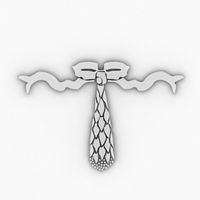
Element
...element
archibase planet
decor ornamental element
element n230708 - 3d model (*.gsm+*.3ds) for interior 3d visualization.
archibase_planet
free
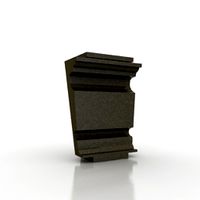
Element
...lement
archibase planet
element moulding friezes cornices
element n201207 - 3d model (*.gsm+*.3ds) for interior 3d visualization.
design_connected
$13
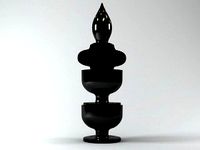
Elements
...elements
designconnected
moooi elements computer generated 3d model. designed by hayon, jaime.
archibase_planet
free

Element
...element
archibase planet
moulding friezes moldings border pilaster
element - 3d model for interior 3d visualization.
archibase_planet
free
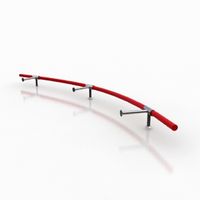
Element
...element
archibase planet
railing hand-rail banisters
element n140808 - 3d model (*.gsm+*.3ds) for interior 3d visualization.
3ddd
$1

Decorative element
...corative , element , plaster
decorative element
3d_export
$5

element studio
...element studio
3dexport
element studio kare design
3ddd
$2

ELEMENT | Диван
... element
производитель: mminterier
дизайн: boris klimek
коллекция: element
полигоны: 45124
вертексы: 45124
Vehicle
3d_export
$30

Vehicle display
...vehicle display
3dexport
vehicle display consists of podium and vehicle cover no vehicle there is a veiled vehicle silhouette
turbosquid
$41

vehicle
... available on turbo squid, the world's leading provider of digital 3d models for visualization, films, television, and games.
turbosquid
$10

vehicle
... available on turbo squid, the world's leading provider of digital 3d models for visualization, films, television, and games.
3d_ocean
$40

Heavy vehicles
...el this model is created with 3ds max 2009 and content .max (3ds max), size: 7,65 mb this model can be used in any scene. enjoy !
3d_export
$6

Trailer Transporter Consignment Vehicle Turnover Vehicle
...trailer transporter consignment vehicle turnover vehicle
3dexport
trailer transporter consignment vehicle turnover vehicle
archive3d
free

Vehicle 3D Model
... sports and recreational vehicle n250714 - 3d model (*.gsm+*.3ds) for interior 3d visualization.
3d_export
$50

Vehicle 3D Model
...vehicle 3d model
3dexport
vehicle
vehicle 3d model fred-13 21262 3dexport
3d_export
$15

special vehicles
...special vehicles
3dexport
3d_export
$10

utility vehicle
...utility vehicle
3dexport
turbosquid
$9

Vehicles pack
...bosquid
royalty free 3d model vehicles pack for download as on turbosquid: 3d models for games, architecture, videos. (1635451)
Open
3d_export
free
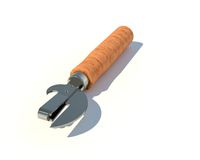
Opener
...r
3dexport
3d model of can opener. its my first work, if u can please show me my mistakes. this 3d model was created in autocad.
3d_export
free

Cap opener
...cap opener
3dexport
handy cap opener, more files/formats here:
3ddd
$1

Кресло, Open Oreon.
...кресло, open oreon.
3ddd
open , oreon
кресло, open oreon.
3d_ocean
$4

Open Book
...r interior max mental model open ray reading shelf text vray
open hardcover book with unique texture map on front and back cover.
turbosquid
$6
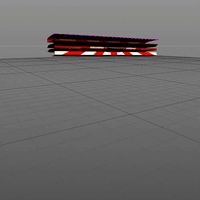
Opening Flag
...squid
royalty free 3d model opening flag for download as c4d on turbosquid: 3d models for games, architecture, videos. (1593555)
turbosquid
$10

Open book
...
royalty free 3d model open book for download as skp and obj on turbosquid: 3d models for games, architecture, videos. (1690781)
turbosquid
$2

bottle opener
...lty free 3d model bottle opener for download as blend and obj on turbosquid: 3d models for games, architecture, videos. (1621201)
turbosquid
$24

Bottle Opener
...free 3d model bottle opener for download as max, obj, and fbx on turbosquid: 3d models for games, architecture, videos. (1300948)
turbosquid
$20

Open Box
...yalty free 3d model open box for download as ma, obj, and fbx on turbosquid: 3d models for games, architecture, videos. (1481218)
turbosquid
$10

Wine Opener
...ty free 3d model wine opener for download as ma, obj, and fbx on turbosquid: 3d models for games, architecture, videos. (1240730)
